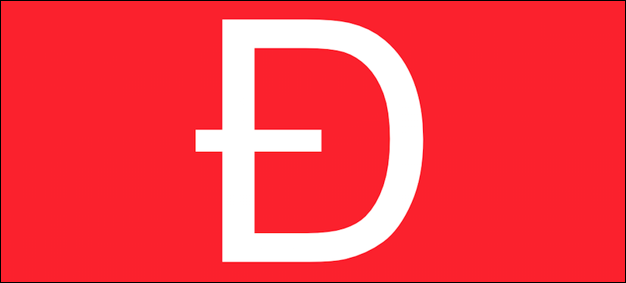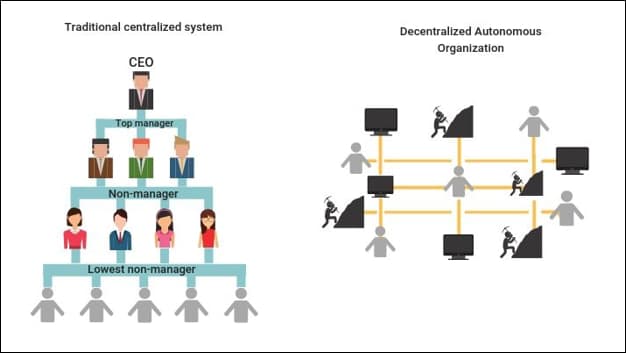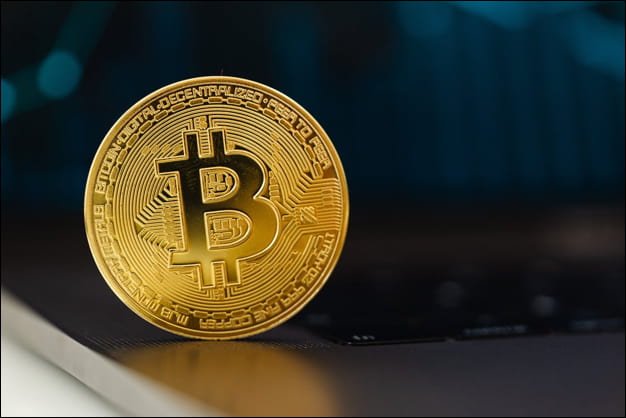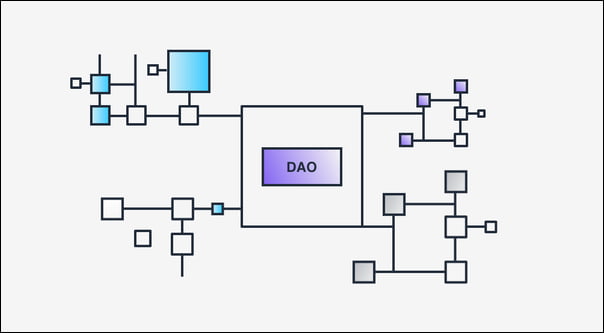
Big corporations and reputed firms are doing business to increase their revenue and capture more of the market. In all that, the basic humane nature of respecting every person’s opinion in the firm and working together as a team has been lost which is why the need for a new business model has risen. Decentralized finance has gotten a lot of attention in recent times. Decentralized Autonomous Organizations (DAOs) are thus rising amidst the corporate to make a mark on global business.
In case you’re not in the know yet, you must have the question, what is a DAO? Let’s find out!
Table of Contents
To get a clearer look at the whole business model of DAO, we should first understand “what is a DAO crypto?”. A traditional corporation works on a hierarchical business model; at times, this does not serve the best interest of every company member. A DAO is an organization built on a blockchain-based management system; all members have equal power in it.
In this kind of management model, every decision is made from the bottom up, where every member votes on the blockchain for approval of any decision. Only approved members can access the central treasuries, and the whole company works to serve in the best interest of all the members.
| A) DAO has a horizontal structure by design; there is no management hierarchy in the DAO business model. |
| B) The DAO business model allows everyone from its community to participate in organization-wide decisions through governance processes and voting. |
| C) DAOs have decentralized ownership – founders or CTOs share ownership with community members. |
| D) DAOs are open-sourced and completely transparent. |

Now that the definition of ‘what is a DAO?’ is out of the way, let’s take a look at the history of the DAO business model. The term ‘decentralized autonomous organization’ was coined back in 1997, and Werner Dilger, a German professor of computer science, was behind it.
However, it wasn’t until the launch of Bitcoin over a decade later that DAOs came back as a topic of discussion to the mainstream. The first fully-fledged decentralized autonomous organization came about in 2016 from a German startup called Slock.it on the Ethereum Block #1428757. This platform came to be known as the “Genesis DAO” or “The DAO“. Thus Ethereum created history by hosting the very first decentralized autonomous organization.
Genesis DAO or The DAO saw its inception back in May 2016, when a few members within the Ethereum community announced its arrival. The code for the platform was left open source by the Slock.It team. During the creation period for The DAO, any user could send ETH tokens to a wallet associated with The DAO and get native tokens in exchange, amounting up to 100.
Within the creation period, the Genesis DAO managed to accumulate about 12.7M in Ether (which was worth around $150 million at that time). Naturally, the project gathered a lot of attention as one of the most successful crowdfunded ones in the history of blockchain.
However, only after a short run, on June 17, 2016, a hacker dug out a loophole in the code for the Genesis DAO that allowed them to take out funds worth as much as $70 million. Within just a few hours, they had drained about 3.6 million ETH, and once the intended damage had been dealt, the hacker ceased the attack.
Following this mishap, Ethereum decided to undo the history of the blockchain to give the investors their funds back. This went against the immutability a blockchain is meant to have, and led to the first hard fork in the history of Ethereum- the Ethereum Classic. The latter contained the users who were against the reversal of blockchain records.

We had already discussed in brief what is a DAO and how they are decentralized in nature. Here is where we will understand what is a DAO in blockchain and its role in the DAO business model in detail. Organizations that follow the DAO business model are spaces in which decisions are taken from the bottom up; a group of members owns the organization. There are many ways to engage in a DAO landscape, the most common of which is via smart contracts and the possession of a token.
A DAO landscape’s rules are defined by a group of community members using smart contracts. These smart contracts establish the groundwork for how the DAO will function. They are extremely transparent, verifiable, and publicly auditable, allowing any potential member to grasp how the protocol will work at each stage fully. Smart contracts are logically coded agreements that govern judgments that are based on blockchain activity. They are pieces of code that run automatically when a predetermined set of criteria is met.
These smart contracts establish the regulations of any organization that follow the DAO business model. Once these regulations have been formally recorded onto the blockchain, the DAO must determine how to acquire financing and confer governance.
Typically, this is accomplished through token issuance, wherein the system sells tokens to raise money and restock the DAO’s treasury. Those with a stake in a DAO can then vote and influence how the business functions by voting on or introducing new governance ideas. The user voting power is distributed depending on the percentage of tokens they own. For example, a person who owns 50 DAO tokens can have twice the voting power of a user who owns 25 tokens.
This methodology protects DAOs from being flooded with suggestions by requiring a proposal to be approved by most stakeholders. The method for determining the majority varies from DAO to DAO and is described in the smart contracts.
DAOs are self-sufficient and transparent because they are constructed on open-source blockchains, and their code is accessible to everybody. Because the blockchain documents all monetary operations, anyone may audit their built-in treasuries.
To properly understand what is a DAO, we also need to look at and understand the objective behind the DAO business model and what exactly makes DAOs so important in today’s business environment.
DAOs are significant because they can enable people with more liberty to choose initiatives whose vision and mission statements connect with them, positions that correspond with their abilities, and colleagues to work with who share their values.
A DAO business model is meant to improve many firms’ existing management structures. Instead of depending on a single person or a small group to determine the entity’s future, the DAO business model seeks for every member to have power, a voice, a vote, and the ability to suggest projects. A DAO also seeks strong administration that is defined by blockchain code.
Organizations that follow the DAO business model have significant advantages over traditional organizations because they are internet-native. The lack of trust required between two parties is a significant advantage of DAOs. While traditional organizations require a great deal of faith in the individuals within them, especially on the part of investors, DAOs just require trust in the code. Since code is public and can be thoroughly tested before release, it is easier to accomplish. After a DAO landscape is formed, its actions must be transparent and verifiable as well as accepted by the community.
To sum it all up, the DAO business model is important, especially in the current environment, as the overall concept is developed around blockchains and decentralized spaces, both of which are predicted to become a major part of the future with the introduction of projects like web3. Compared to traditional business models, it prioritizes the wants and needs of all parties that are involved with the DAO and gives a fair chance to each member of the community in accordance with the number of tokens that they hold individually, whereas, in the traditional system, an authority structure is actively followed where those who are considered to be at the bottom of the chain do not hold much power. a DAO landscape provides a lot more freedom to its members and introduces a more unified concept of working.
Governance in any existing organization following the DAO business model is encoded and published on public blockchains, typically with standard protocols to be followed by members in the future. The decision frameworks evolve to ensure a DAO landscape is governed effectively with necessary incentives for the network participants/members. The code is written in such a way that the members of the DAO ecosystem are generally incentivized when they add value and are penalized if they act against the collective goal of the DAO.
Typically, governance proposals in DAO landscapes are decisions that impact all or a significant portion of the DAO. Governance decisions are generally required for:
(i) Moving funds out of the treasury of the DAO landscape, including workstream budgets
(ii) Changing the DAO structure/parameters
(iii) Policy decisions: All other decisions are taken within workstreams and need not be part of the overall governance. Governance in DAO landscapes can be viewed in 2 ways. First, the decision function view treats governance as a function f(x1,x2…xn)→y, where the inputs are the wishes of various legitimate stakeholders of the DAO, and the output is the decision. Second is the coordination model of governance, where focal points are formed to achieve optimum coordination behavior. Generally, the rules set here are influenced by ‘Game Theory’ concepts like Prisoner’s Dilemma, where one benefits heavily from making the same move as everyone else.
Commonly, governance in the DAO business model is achieved via ‘Token voting’.
Here every vote is recorded on the blockchain. Voting requires gas fees.
Voting is done on tools such as snapshot. Here, voting does not require gas fees. However, the votes are not captured on the blockchain either. Voters can vote in proportion to the native tokens they hold and ‘sign’ the transaction using their digital wallets. The votes are saved in decentralized storage systems such as IPFS to avoid tampering. This is also done to avoid gas fees for low-risk decisions.
Any member of the DAO who holds tokens native to a particular DAO landscape is eligible to vote for proposals brought in by other members (s). The more tokens you have, the more voting power. In DAO landscapes, Quadratic voting is sometimes used to deter the crypto whales who hoard tokens in large proportions from influencing the outcomes. Quadratic voting is a method of collective decision-making in which a participant votes not just for or against an issue but also expresses how strongly they feel about it. This discourages low efforts that don’t add value. This type of voting can also help protect the interests of small groups of voters who care deeply about particular issues. Further, it is not uncommon in organizations following the DAO business model for token holders to ‘delegate’ their votes to a steward or a DAO member who then votes on behalf of these token holders.

Here we will get a better understanding of what is a DAO in crypto and its proper relation to the digital asset. Let’s take a look at how decisions are made during software upgrades on the Bitcoin network, which more or less operates like any organization that follows the DAO business model. Bitcoin has a soft forking/software upgrade mechanism built into its protocol. Anyone can release a new version of the software. The miners vote by choosing the version for the block they mine. Every block has a label specifying the version, counted as a vote. After 90% of the blocks are mined with the new version, a soft fork is implemented, which makes the new version default. After activation of a soft fork, blocks mined in the old version by the minority miners will be rejected, and the miners lose out on their fees, forcing them to upgrade.
The first type of DAO that we will be discussing is the Automated Market Maker (AMM) and Decentralized Finance (DeFi) DAO business models. These types of DAOs provide decentralized financial services to users using smart contracts. MakerDAO, for example, is a decentralized finance (DeFi) project which allows users to leverage assets to generate Dai. Another great example of these types of DAO is Aave Protocol.

The next on this list is the Social DAO landscape. These DAOs intend to bring like-minded people together coordinated around a token. A great example of this type of DAO is the Friends with Benefits DAO landscape. This DAO comprises a community of artists, creators, thinkers, and people leading the web3 transformation.

This type of DAO stands apart from the crowd since anyone can join this DAO to facilitate decentralized venture capital funds. Everyone within this DAO landscape, further, will have voting power to decide how to spend the funds. Krause House is a great example of these types of DAOs. It claims to be a community of hoop fanatics just crazy enough to buy an NBA team.

These types of DAOs typically donate funds into grant pools and collectively vote on allocating and distributing the funds. Gitcoin DAO is one of the major examples of these kinds of DAO business models. This DAO landscape focused on grants for funding digital public goods. Public goods range from clean air and water to national defense. In the same sense, digital public goods should be accessible by anyone irrespective of their economic status. Examples include open source software, content, and AI models.

Media DAO landscapes provide organic content driven by community, rewarding content creators in the native token and removing advertisers from the equation. Bankless DAO is one example of this type of DAO. This DAO provides education and onboarding on web3 without traditional banking through a community-driven newsletter/media.

Want to know more about the DAOs, DACs, DAs & More? Check out the DAO Guide for all the terminologies. 📖

This is one of the major benefits of DAO. Decisions affecting the organization are made by a group rather than a centralized authority usually massively overwhelmed by its colleagues, instead of relying on the acts of the CEO or the Board of Directors.
Voting is done via blockchain within a DAO and is public knowledge. This forces people to take action in a manner they believe is ideal, given that their votes and actions would be made public. This encourages behaviors that boost voters’ reputations while discouraging acts that harm the community.
Participation benefits DAO as individuals inside an organization might feel motivated if they have rough power to have a meaningful say in decision-making and vote on all issues. Despite not having significant voting power, DAO encourages token holders to vote, burn tokens, or use them as they see fit.
A DAO business model provides the benefits of a community as it enables people from all across the world to work together as a team to develop a single vision. Token holders can communicate with other owners from anywhere, using only an internet connection. This helps in building a community that holds a similar vision and idea in mind.
When managing a DAO, tokenholders may come from a wide range of educational backgrounds, have varying understanding of initiatives, and have access to resources, as opposed to a single CEO who is well versed in how the company is doing. Consequently, it is hard to guarantee that all tokenholders will work together and understand all actions in a DAO.
When only a CEO leads a public corporation, a single vote could be required to decide on a particular action or course of action for the company. Every user has the opportunity to vote in a DAO. This necessitates a fairly long voting process, especially when time zones and priorities outside the DAO are considered.
The DAO business model can be inefficient because time is required to educate voters, communicate objectives, explain methods administratively, and onboard new members; DAOs spend more time arguing about the reform than implementing it. A DAO may become mired in petty administrative tasks due to the need to manage many more people.
Security is a concern for all online platforms using blockchain resources. The DAO business model takes extensive technical knowledge; without it, whether votes are counted or decisions may be illegitimate. If users cannot rely on the entity’s structure, a trust may be shattered.
The DAO landscape allows us to collaborate with individuals around the globe without ever meeting anyone. Members can create their ideal regulations and vote on critical aspects using blockchain without the need for bureaucracy or hierarchy. Here is a screengrab of active DAO landscapes that have been classified under various categories for a better understanding.

The world is working on a corporate business structure where the interests are generally to generate more revenue and favor the top management. This leaves the general employees to work for the organization without gaining personal growth. After the whole discussion relating to what is DAO in blockchain and the types of DAO, you must feel that this new kind of business structure serves the bigger goal of humanity. It can be concluded that DAOs are still in their infancy and need to keep moving forward to be adopted globally. As blockchain and internet-based organizations, DAOs can completely revolutionize how governance in companies works.
Every organization requires some code to stay true to its purpose. Today, in traditional workplaces, top management usually makes unilateral decisions affecting the whole organization. In various types of DAO, running a company with a proper code of governance shares decision-making with every stakeholder. It makes the organization work in the best interest of everyone.
The first attempt at creating a DAO was from the company ‘The DAO’ in 2016. It tried to create an organization where the stakeholders got to choose the projects that the company should fund. The investors received tokens based on the amount of ETH they invested in the project. These tokens earned them votes in the company.
The DAO faced a breakdown of the community when a hacker worked through their company code and slowly drained it of funds. The hacker exploited a bug in the organization and stole the locked-in funds.
As you understand “what is a DAO crypto?”, you know that it works on a set of rules coded on the blockchain. These codes cannot be changed easily and can be exploited like in the case of The DAO. Any loophole in the framework can lead to potential theft and other issues.
What is Decentralized Application | Testnet Vs Mainnet | Tangle Technology Vs Blockchain | Ethereum Vs Hyperledger Fabric | Ethereum Bitcoin Difference | Mastercoin Crypto | What is the Best Software Wallet | Blockchain Vs API | What is Central Bank Digital Currency | What is the Graph | Difference Between Stablecoin and CBDC | What is Staking Crypto | Proof of Authority Explained | How Does Waves Work | What are Blockchain Transactions | What is a Hyperledger Fabric in Blockchain | Decentralized Crypto Lending | What is Proof of Stake in Sharding Blockchain | Centralized Exchange Vs Decentralized Exchange | TVL Blockchain
Disclaimers : Opinions expressed in this publication are those of the author(s). They do not necessarily purport to reflect the opinions or views of Shardeum foundation.
Contributors :
Shuwam Rana, Harsha Karanth, Vishwanath Holin contributed to this blog.